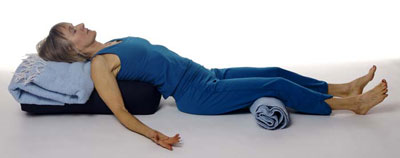(Notes from the Detroit workshop, Jan 2013)
Motility
What is motility? It is not a well known expression in the modern world, but refers to the innate movements of life: heart beat, the respiratory rhythm, peristalsis, cerebro-spinal movements, and all of the other ways in which the inner fluids and tissues dance to the music of the life force, the prana or chi. We can also refer to this as the actions of the energy or subtle body. Here we also uncover our emotions, healthy and unhealthy, expressed or repressed as they connect thoughts, memories and deeper motivations to our physiology. Therefore this is a challenging and yet highly therapeutic realm for exploration.
For the individual, this inner dance of the subtle body begins at conception.
In the embryological chart above we see the conceptus, the earliest stage of the embryo, at first cellular differentiation. The inner layer of cells or endoderm (yellow) becomes the gut tube, liver, lungs and other internal organs. The outer layer, the ectoderm (blue), becomes the nervous system including skin, brain, spinal cord and nerves. The middle layer, the mesoderm, just emerging above, creates the connective tissue structures, muscles, bones, ligaments, tendons, plus kidneys and heart. Motility has taken the single egg-sperm cell to here through the constant movement we call growth and development and this will continue on through the rest of life. Somewhere along the way we lost our ability to feel this dynamic state of aliveness and our yoga practice is one way to help reconnect with this inner dance. ( On a future post we will show the connection of this first cellular differentiation to the three doshas in Ayurveda, vata, pitta and kapha.)
The modern human has essentially lost touch with the endoderm or gut tube. We live in out brains and muscles, the ectoderm and mesoderm, and only notice the inner organs if there is a problem. We need to slow down to feel the inner rhythms, to be able to navigate them, to be soothed by them, to feel their connection to the cosmic rhythms. Restorative yoga postures are designed to awaken our inner sense of motility by using props, supports and gravity to do the work of the outer musculature and thus release some of the ecto and mesodermal holding patterns. B.K. S. Iyengar’s pioneering use of various supports in his therapeutic classes in Pune have revolutionized the way yoga poses as he uses them to untangle the endodermal confusion also.
are designed to awaken our inner sense of motility by using props, supports and gravity to do the work of the outer musculature and thus release some of the ecto and mesodermal holding patterns. B.K. S. Iyengar’s pioneering use of various supports in his therapeutic classes in Pune have revolutionized the way yoga poses as he uses them to untangle the endodermal confusion also.
A beginner approaches motillity through feeling the breath. Dharana, bring your attention to, and dhyana, sustaining your attention to the breath and integral components top a yoga practice. Most beginners are too caught up in instructions, muscles, effort and confusion to stay with the breath, so savasana, or other supported poses are a great way to awaken this inner world. At the level of motility, it is all about ‘letting go’. Digestion happens. Circulation happens. At a cellular level life happens. The delightful reality is that ‘we’ are unnecessary. That is, the “I” that wants to ‘do’ something is extraneous here. Of course this can create some difficulty as the egoic mind, the one that wants to ‘be in control’ will find ways to be distracted and not allow you to ‘let go’. Be patient. You may even fall asleep in the beginning. Once you learn how to ‘dive in ‘ an infinite inner world awaits you. B.K.S. Iyengar has described one level of his inner sensitivity as ‘feeling the height and temperature of the cerebro-spinal fluid as it fluctuates during the pose’.
B.K.S. Iyengar has described one level of his inner sensitivity as ‘feeling the height and temperature of the cerebro-spinal fluid as it fluctuates during the pose’.
The challenge is to bring this awareness and sensitivity to the more challenging poses as well. When you can move in and out of a pose smoothly, easily and relatively effortlessly, then you will be able to find the balance of energies that sustain the pose from the inside. This is why mobility comes first. Patanjali call this sthira sukham. Many students are sthira dukham. That is, they stay in the posture by constricting the energy (rajas) or collapsing and hanging out (tamas). Sthira, steady, stable strong comes from gravity. Sukham fluidity, ease, sweetness, comes from a freedom of breath and all other inner movements, the dance of life. Sthira sukham, sattva, That is a healthy pose. Mobility and motility in perfect balance.  Dukha is suffering, being out of balance, off center, in a state of unnecessary effort. Find time to rest in your inner aliveness, feeling, sensing, letting go, allowing Mother Earth and Father Sky to hold you in a loving embrace, and find out what emerges. With balance and harmony comes grace. With grace comes the possibility of awakening into your own inner stillness. Rest there.
Dukha is suffering, being out of balance, off center, in a state of unnecessary effort. Find time to rest in your inner aliveness, feeling, sensing, letting go, allowing Mother Earth and Father Sky to hold you in a loving embrace, and find out what emerges. With balance and harmony comes grace. With grace comes the possibility of awakening into your own inner stillness. Rest there.
In part three, we will dive into stillness, or melt into stillness, or dissolve into stillness or awaken to stillness, or……..

